The Controversial Sir Thomas Mitchell
advertisement
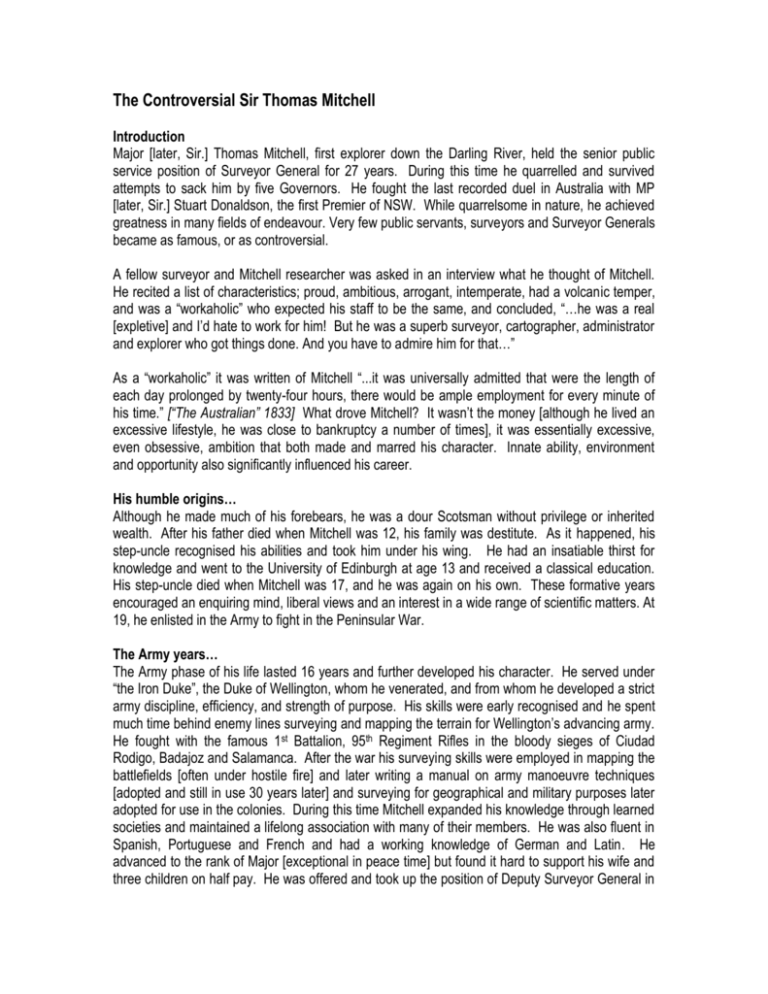
The Controversial Sir Thomas Mitchell Introduction Major [later, Sir.] Thomas Mitchell, first explorer down the Darling River, held the senior public service position of Surveyor General for 27 years. During this time he quarrelled and survived attempts to sack him by five Governors. He fought the last recorded duel in Australia with MP [later, Sir.] Stuart Donaldson, the first Premier of NSW. While quarrelsome in nature, he achieved greatness in many fields of endeavour. Very few public servants, surveyors and Surveyor Generals became as famous, or as controversial. A fellow surveyor and Mitchell researcher was asked in an interview what he thought of Mitchell. He recited a list of characteristics; proud, ambitious, arrogant, intemperate, had a volcanic temper, and was a “workaholic” who expected his staff to be the same, and concluded, “…he was a real [expletive] and I’d hate to work for him! But he was a superb surveyor, cartographer, administrator and explorer who got things done. And you have to admire him for that…” As a “workaholic” it was written of Mitchell “...it was universally admitted that were the length of each day prolonged by twenty-four hours, there would be ample employment for every minute of his time.” [“The Australian” 1833] What drove Mitchell? It wasn’t the money [although he lived an excessive lifestyle, he was close to bankruptcy a number of times], it was essentially excessive, even obsessive, ambition that both made and marred his character. Innate ability, environment and opportunity also significantly influenced his career. His humble origins… Although he made much of his forebears, he was a dour Scotsman without privilege or inherited wealth. After his father died when Mitchell was 12, his family was destitute. As it happened, his step-uncle recognised his abilities and took him under his wing. He had an insatiable thirst for knowledge and went to the University of Edinburgh at age 13 and received a classical education. His step-uncle died when Mitchell was 17, and he was again on his own. These formative years encouraged an enquiring mind, liberal views and an interest in a wide range of scientific matters. At 19, he enlisted in the Army to fight in the Peninsular War. The Army years… The Army phase of his life lasted 16 years and further developed his character. He served under “the Iron Duke”, the Duke of Wellington, whom he venerated, and from whom he developed a strict army discipline, efficiency, and strength of purpose. His skills were early recognised and he spent much time behind enemy lines surveying and mapping the terrain for Wellington’s advancing army. He fought with the famous 1st Battalion, 95th Regiment Rifles in the bloody sieges of Ciudad Rodigo, Badajoz and Salamanca. After the war his surveying skills were employed in mapping the battlefields [often under hostile fire] and later writing a manual on army manoeuvre techniques [adopted and still in use 30 years later] and surveying for geographical and military purposes later adopted for use in the colonies. During this time Mitchell expanded his knowledge through learned societies and maintained a lifelong association with many of their members. He was also fluent in Spanish, Portuguese and French and had a working knowledge of German and Latin. He advanced to the rank of Major [exceptional in peace time] but found it hard to support his wife and three children on half pay. He was offered and took up the position of Deputy Surveyor General in far off New South Wales, being promised advancement to Surveyor General when the position became vacant. He was well educated, very knowledgeable in many fields of endeavour and extremely confident of his abilities. His army background [he was commonly called “the Major”] showed in his leadership by example, pursuit of efficiency [which he expected of others], the application of strict discipline, giving orders and expecting them to be obeyed without question, and in his military approach generally to his work and to his expeditions. Surveyor General Mitchell arrived in Sydney in 1827 and threw himself into his new career with zeal, quickly energising the Surveyor General’s Office overwhelmed by a backlog of work and indifferent performance. Always ambitious, he knew you did not become famous as a surveyor or public service administrator. He wanted to explore and expected that he, like John Oxley before him, would be the Government’s explorer. However, Governor Darling had other ideas and these commenced Mitchell’s stormy relations with successive governors. Firstly, upon Oxley’s death, Darling wanted his brother-in-law to be Surveyor General, only to be rebuffed by Mitchell’s influential patrons. Darling loaded Mitchell with work to also include responsibility for road and bridge building, Commissioner for Lands and Colonial Architect. Although Darling knew that Mitchell would get the work done, he also frustrated him by interfering in matters where Mitchell was more knowledgeable, capable and practical. And, to the frustration of any surveyor, Darling wanted Mitchell to spend more time in the office “chained to his desk” when Mitchell wanted to be out in the field where real work got done. In addition to surveys of land [he and his staff surveyed more land in 6 ½ years than his predecessors had in the previous forty years], Mitchell produced his “Map of the Nineteen Counties” in six years [1834] that covered the limits of settlement from Tamworth and Port Macquarie in the north, to Moruya in the south and to Orange and Yass in the west. He used a reconnaissance-type trigonometrical survey method that he developed after the Peninsular War and that was suited for the rapid mapping of unexplored country. It was compiled from 900 maps and was remarkable for its relative accuracy. By the end of 1830 he had plotted new roads from Sydney to Parramatta and Liverpool, had marked out the Great South Road, and had found a new route and had constructed a road down the Blue Mountains that is still the main road today. The Explorer Mitchell still wanted to be a famous explorer. Darling said no and sent his friend Charles Sturt instead. This put the ambitious Mitchell in the intolerable position of working all hours holding down four jobs only to witness Sturt make discovery after discovery and receive all the glory. This only made Mitchell even more ambitious and commenced his hate relationship with what he saw as less able governors interfering in his work and frustrating his ambitions. Mitchell ultimately did get his chance to explore. He undertook four expeditions in 1831-2, 1835, 1836, and 1845-6 respectively, taking 2 ½ years in all and travelling 10,000 Kms. [or three times the distance from Sydney to Darwin]. Incidentally, he received his Knighthood more for his Victorian discoveries on his Third Expedition than for all his hard work as Surveyor General, etc. He was also famous for his Fourth Expedition to Queensland that lasted a year. His expeditions opened up large quantities of land for grazing and settlement. He published detailed accounts of these expeditions, which, unlike those of his rivals, involved mapping and scientific study, as well as discovery. He never found the mighty NW flowing river that was to make him famous and that was never there. His obituary in “the Illustrated London News” referred to Mitchell as the “Cook of the Australian interior”. He would have been chuffed about that… Wider interests He had wide scientific interests, especially native fauna, flora and fossils. He is regarded as the father of Australian palaeontology [fossil study]. He wrote a textbook on Australian geography, translated a 280-page epic Portuguese poem, “The Lusiads”, into English, and composed 55 poems of his own. He was a member and fellow of a number of learned societies and was awarded an honorary Doctorate in Civil Law by Oxford University. He was also the Legislative Council member for Melbourne for four years. He also fostered and contributed to many learned institutions in the Colony. For instance, he was the Foundation President when the Sydney Mechanics’ School of Arts was formed in 1835 and which has the Mitchell Room in its Pitt Street building today. Attitude to aborigines His attitude towards aborigines varied but was liberal and advanced for that time. Two incidents, when aborigines were killed, occurred on his expeditions and have been referred to in recent times as massacres and Mitchell unduly condemned. Controversially, this journalistic view varies with those of two eminent historians who provide their references and who consider the events in context and with Mitchell’s life generally. A cultured man, Mitchell studied aboriginal ways, admired their bushcraft, but deplored some of their practices. He held high regard for Yuranigh, his guide on his Fourth Expedition, and raised two aboriginal children, Ballendella and Dicky as part of his family. He had twelve children. His inquiring mind also led him into the field of inventions. His two discoveries, the boomerang propeller for steam ships and the water bag, owe their inspiration to aboriginal designs. Conclusion He died in 1855 at the age of 63, just as Governor Denison received the findings of a “kangaroo court” inquiring into the Surveyor General’s Office, but contrived to sack him. He caught bronchitis while still hard at work doing what he loved; surveying a road in the Braidwood area. His funeral was one of the largest held in Sydney to that time. He was buried with full military honours in Camperdown Cemetery, Sydney. Colonial newspapers in Mitchell’s time were divided generally into those that supported the Governor [“Sydney Gazette” and “Australian”] and those that were radical and often critical [“The Monitor”, “Colonist” and “The Sydney Herald”]. The former often reflected the views of the Governor of the time and tended to find fault with Mitchell. From these accounts it is easy to dwell on his failings and disregard his achievements and this divided opinion continues today. A proper understanding of the controversial Mitchell must give regard to the times and the events that formed his character. For further reading: References: Baker, D.W.A. The Civilised Surveyor – Thomas Mitchell and the Australian Aborigines Melbourne University Press 1997 Foster, William C. Sir Thomas Livingston Mitchell and his world 1792-1855 The Institution of Surveyors NSW Inc. Sydney 1985
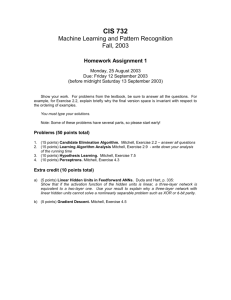
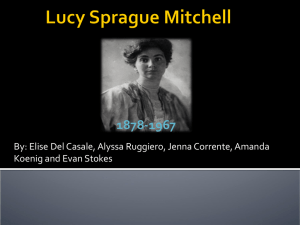
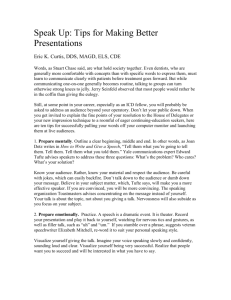


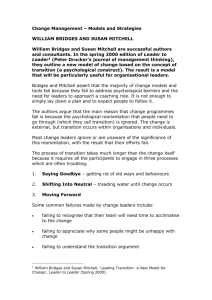
![Summer Reading: [All books are the unabridged versions] Class](http://s3.studylib.net/store/data/006936044_1-f6368b3af66ab917fa4697494ea2bdf7-300x300.png)